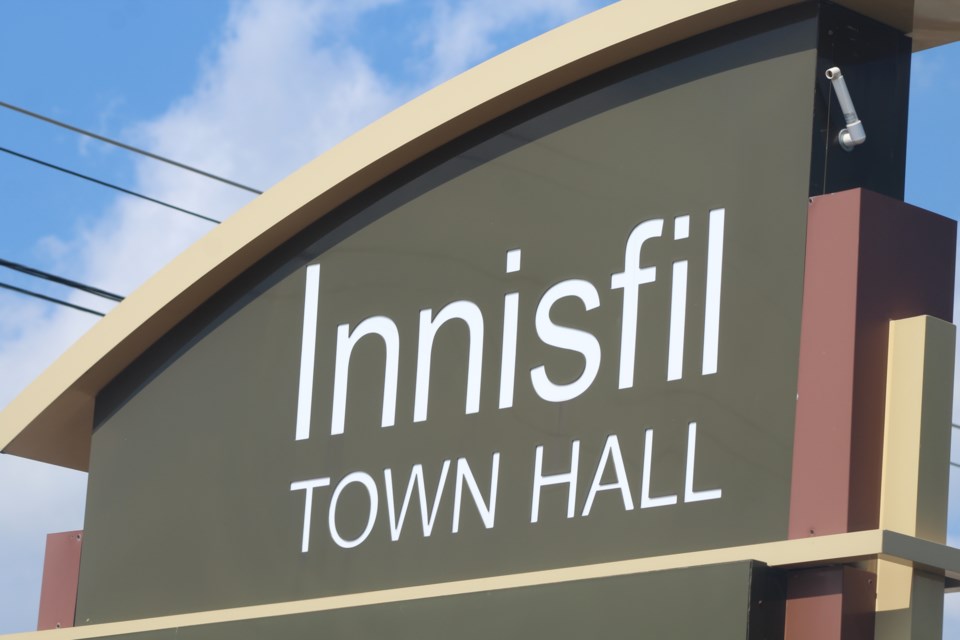Innisfil has adopted its updated transportation master plan.
Town council moved forward with the plan at a recent meeting after providing feedback on the proposals during its June 22 meeting.
The revised plan includes an increased focus on active transportation and promoting healthy lifestyles, exploration of scalable, reliable transit options, growth planning – including the Orbit and new GO station and future Highway 400-6th Line interchange – a new cycling route around Lake Simcoe, creating a Highway 89 east-west link to bypass Cookstown and intersection and grade separation improvements at the train crossing at Innisfil Beach Road and 20th Sideroad.
Changes were made to the document from the presentation in June, including better accommodation for agricultural vehicles, an issue championed by Coun. Kevin Eisses at the earlier meeting.
While improving pedestrian access and safety throughout the municipality may be part of the plan, in some cases, residents might be waiting years before they see any changes. For the urbanization of 7th Line from 20th Sideroad to St John’s Sideroad, the timeline is set for 2031, according to the plan.
“Having these items in the report lets residents know the plans for the future and they’re not being dropped off,” said Coun. Donna Orssati. “It may not be happening as quickly as we want, but everything has been phased out.”
Orsatti also hoped that future councils could use the transportation plan to help alleviate the problems found in areas that have drive-thru restaurants. Allowing for seven vehicles in the queue is not sufficient, she suggested.
“I just hope that in future planning applications that come forward to the town for drive-thru food facilities, that we take into consideration lineups,” she said. “This is a commuter town and the lineups, when they are on major roads, they back up and they interfere with residential streets.”
Coun. Alex Waters took a different approach, looking at drive-thrus not only as a bane to traffic flow but also to the environment.
“They’re a climate-change disaster, with people just sitting there in long lineups, just having their cars run,” he said. “People are not going without their coffee… there might be a small decline, but people are still going to demand their coffee and they’re going to get out of their car and actually get on their feet and walk.”
Waters wondered if a ban was possible, with Mayor Lynn Dollin confirming that a previous council had banned them in a portion of town, only to immediately grant an exemption for a credit union in that area.
Director of growth Leo DeLoyde admitted the town has work to do with drive-thrus, but it is not alone in that regard.
“Drive-thru restaurants are bedevilling everyone, everywhere,” he said. “We do understand the greenhouse gas emissions of the drive-thrus. The push back comes from the restaurateurs who are telling me... 40 to 60 per cent of their revenue are derived from drive-thrus.”
Traffic-calming measures were on the mind of Dollin, who wondered how the ongoing pilot projects would interact with this document, especially considering how the transportation plan seemed to call for a de facto method of traffic calming to be removed through downtown Cookstown.
“The on-street in the village is actually the only thing that calms the traffic,” Dollin said. “The only thing that makes traffic use other routes is the fact that there’s a bottleneck and it does take them a lot of time to get through Highway 89 and 27.”
While happy to see the transportation plan call for an east-west bypass of Cookstown, the mayor said she would be opposed to doing away with on-street parking along Highway 89.
Traffic calming on high volume roads is complicated, said Carolina Cautillo, project manager of roads, traffic and transportation.
“We acknowledge that on-street parking provides an important traffic calming function, it absolutely does,” she said. “We are looking through our traffic-calming strategy… for a way to manage speed on these high-volume arterials and major collector roads as well.”
She also suggested any discussion on removing on-street parking is one for the future and tied closely to an east-west bypass.
Adopting the transportation plan will have no impact on Innisfil’s finances, but the recommendations within will be utilized in developing the town’s capital and operating budgets, as well as the next development charges background study.
A notice of study completion has been issued, with written comments about the transportation plan being accepted until 30 days after the fact.



